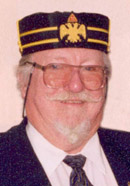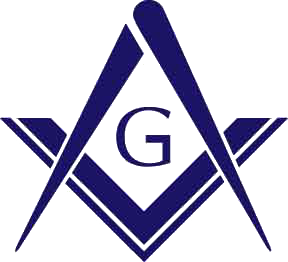by Stephen M. Osborn, 32°
Since that evening we first stood in the Northeast corner of the Lodge, we have been presented with many working tools, from the 24-inch gauge and common gavel to other instruments that help us to understand ourselves and the universe. We have heard the lectures on them and their uses, but how much thought do we give to them?
How many of us, for instance, have watched a sculptor at work and compared his labor to Freemasonry? The sculptor takes a piece of wood or a block of stone and studies it. Finally, he finds the key to release the beauty in it, and he begins to work. He starts with crude tools, an axe and an adz, or a coarse stone-splitting chisel and mallet and begins trimming away big chunks, pausing every once in a while to consider, then continuing to hew and chip. Eventually, a blocky form begins to emerge.
Then he begins to use finer tools, knives, chisels, and mallets with a lighter touch. The final form begins to emerge more clearly. The sculptor now works more slowly and carefully. As the figure becomes more distinct, he picks yet finer tools.
Finally, the sculptor steps back, and before him is the figure which, at the outset, only he could see, but it is now revealed to all. To the sculptor, it may be no great feat, but to us, it is akin to magic. Leonardo da Vinci is reputed to have answered the question of how he carved a particular piece from a block of marble with these words: “I simply removed all the stone that doesn’t look like an elephant.” Simple for him, nearly impossible for us.
We are, to a great degree, the tools in the hands of the Grand Architect of the Universe, but we are self-acting tools. Thus, we have more responsibility. We receive direction from our Masonic teachings, our readings, our rituals, but it is up to us to perfect the rough ashlars which are ourselves. We must keep ourselves sharp and learn to strike true. We must recognize what is superfluous and what is part of the sculpture. How many apprentices have spoiled a block of marble by a wrong blow? We must learn to be guided by the plan of the Creator as we shape ourselves and our world to fit into that perfect edifice, not made by hands.
If we study and reflect upon our oaths and the teachings of Masonry, Scottish Rite Masonry, and York Rite Masonry; if we keep these teachings before us always in our daily lives and in our interactions with the world, we cannot help but make at least our particular corner of the world a better place and so set an example for others to follow.
May we always keep ourselves sharp and on the cutting edge within the boundaries of the lines laid out by the instruments of our Craft, being careful not to spoil the Great Work by a careless misstrike. If we can learn to do this, then we can truly become worthy of the Great Work intended by the Grand Architect of the Universe.
 Stephen M. Osborn was raised in Mill Valley Lodge #356, Mill Valley, California in 1984 and is a life member of Camino Lodge No. 19, Stanwood, Washington. He is also a member of Walter F. Lodge of Research #281, Grand Lodge of Washington. He joined the Scottish Rite, Valley of Everett, Orient of Washington, in 2002, becoming a life member, and is a member of both the Philalethes Society and the Scottish Rite Research Society. He is also a member of the Southern California Research Lodge and Journeyman Online 2002 of the Grand Lodge of NSW Australia. He is a retired Battalion Chief, lifelong sailor, writer, poet, philosopher, historian, and local newspaper columnist.
Stephen M. Osborn was raised in Mill Valley Lodge #356, Mill Valley, California in 1984 and is a life member of Camino Lodge No. 19, Stanwood, Washington. He is also a member of Walter F. Lodge of Research #281, Grand Lodge of Washington. He joined the Scottish Rite, Valley of Everett, Orient of Washington, in 2002, becoming a life member, and is a member of both the Philalethes Society and the Scottish Rite Research Society. He is also a member of the Southern California Research Lodge and Journeyman Online 2002 of the Grand Lodge of NSW Australia. He is a retired Battalion Chief, lifelong sailor, writer, poet, philosopher, historian, and local newspaper columnist.


